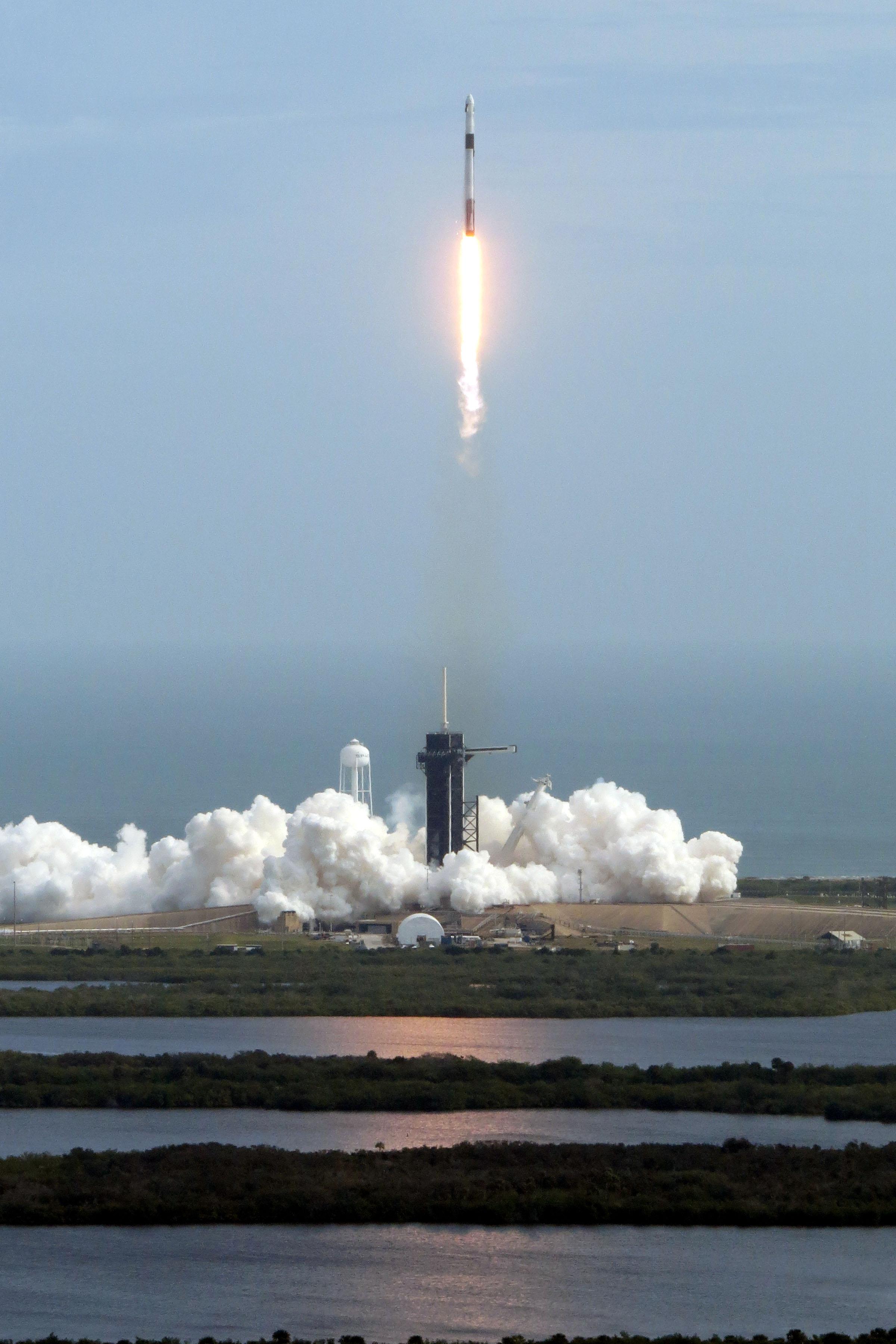
CAPE CANAVERAL - A SpaceX Falcon 9 rocket lifted off from Kennedy Space Center on Jan. 19 and intentionally shut down 85 sec. later, setting the stage for a 131,000 ft., (40 km) Mach 2.2 test of a Dragon capsule launch escape system, the last major milestone before a crewed flight test to the International Space Station (ISS) as early as March.
As expected, the rocket, which included a fully fueled second stage, tumbled and broke apart in a fireball about 9 sec. later, showering debris over the Atlantic Ocean. The Crew Dragon capsule, which ignited its eight Super Draco thrusters as soon as the booster’s engines shut down, fired for 8 sec., hurling the spacecraft more than 0.5 mi. up and away from the rocket, simulating an inflight launch abort.
Upon reaching apogee 2 min. 25 sec. after launch, Dragon jettisoned its unpressurized trunk section and used its smaller Draco thrusters to reorient its heat shield for atmospheric re-entry.
At 4 min, 48. sec. after launch, at an altitude of 20,000 ft., Dragon jettisoned a panel near its nosecone, allowing mortars to fire to deploy a pair of drogue parachutes. A minute later, with Dragon about 6,500 ft above the ocean, four main parachutes, each 116 ft. in diameter, unfurled, slowing Dragon’s descent to 20-25 ft. per sec.
Two instrumented seats inside the capsule, onto which were strapped a pair of anthropomorphic test articles, reoriented to splashdown position as Dragon slowly descended. The capsule splashed down about 20 mi. offshore at 10:38 a.m. EST, ending the flight test after less than 9 min.
The capsule was loaded onto a waiting recovery ship and will be taken back to Florida for analysis. In addition to flight test review, SpaceX has two more tests of its parachute system before NASA will proceed with a long-awaited crew flight test to the ISS, which is expected in March, a year after its successful uncrewed trial run to the station.
“There’s a lot left to do … but by all accounts this was a very successful test,” NASA Administrator Jim Bridenstine told reporters after launch.
“It went as well as one can possibly expect,” added SpaceX founder, CEO and chief engineer Elon Musk. “I’m super fired-up. This is great.”






Comments
Just Watching; interesting question and I thought NASA should include this test - Apollo did it as part of the "Little Joe" tests, it seems like something that should be included here.
High Irene. I heard your phone call at the conference when you mentioned using technologies gained from building the crewed capsule on Starship. SpaceX still has a lot to learn about extended manned space missions. Maybe Yusaku and his yet to be announced girl friend will broaden that knowledge base outside the Earth's radiation belt. Been done before.